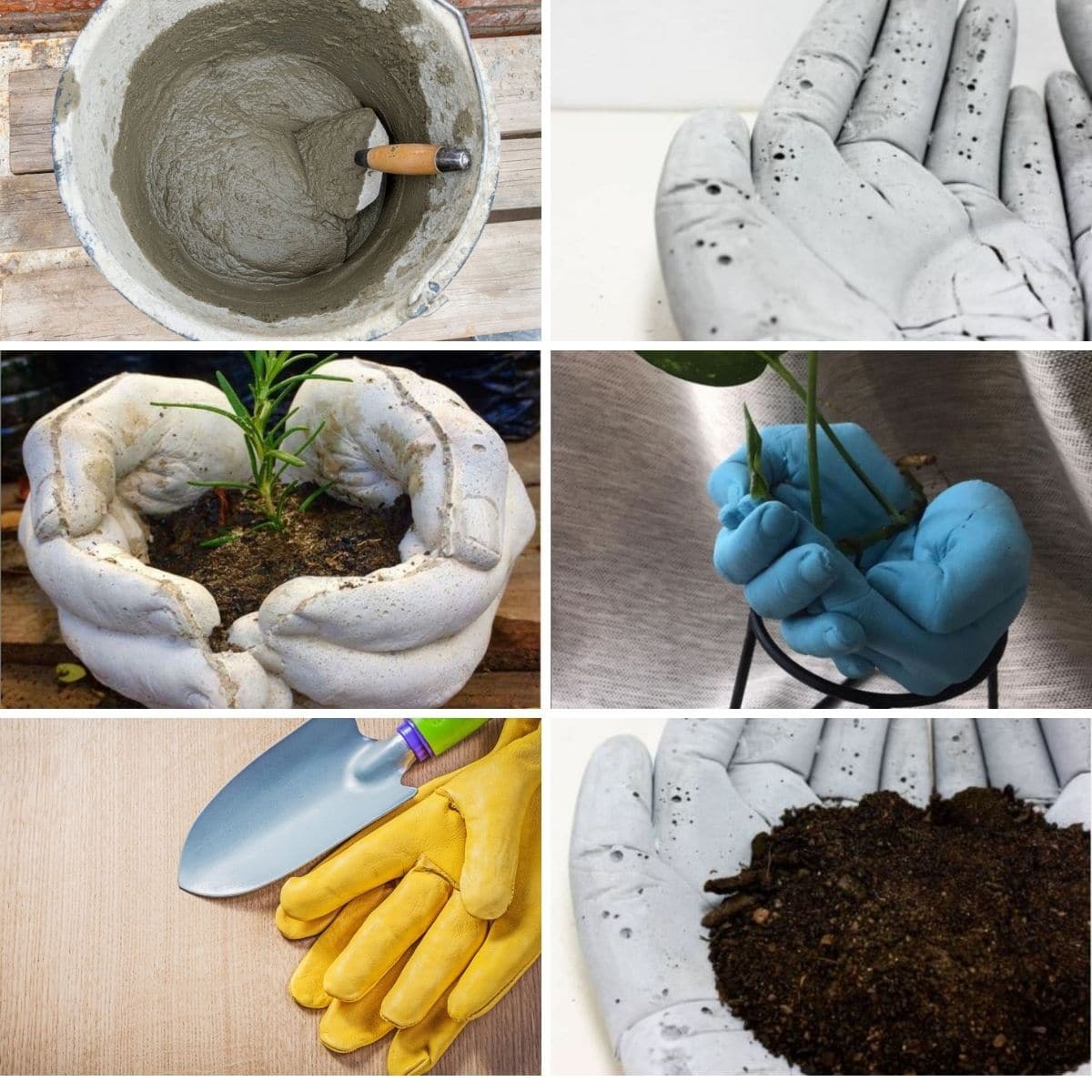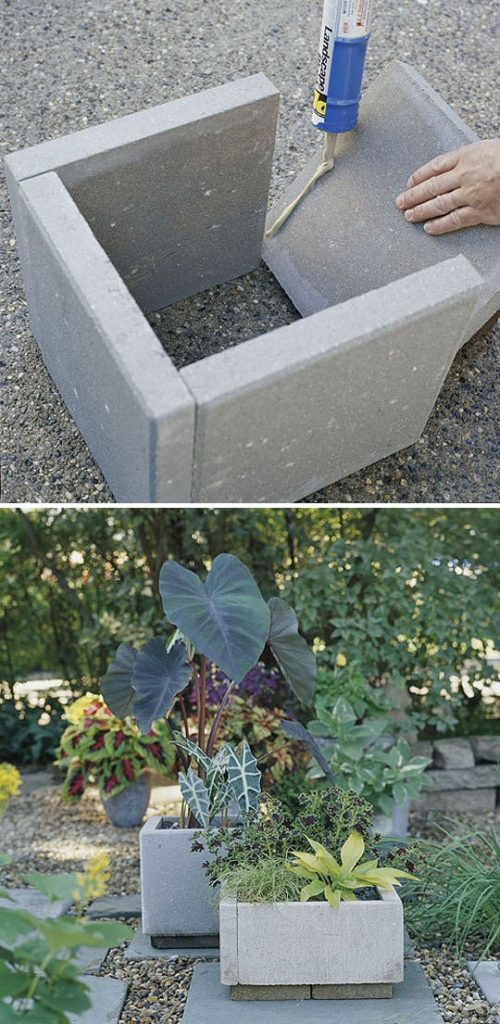

Concrete Creations: transforming your home and garden with simple DIY projects. Imagine pathways and planters crafted from durable, personalized concrete, bringing beauty and function to your outdoor spaces. This guide delves into the world of concrete DIY, offering practical steps and inspiring ideas for concrete crafts. We’ll tackle the common challenges in working with concrete, guiding you through the process from mixing to finishing, focusing on creating beautiful and lasting features for your garden and home. We’ll outline various concrete projects, such as stepping stones, planters, and more. The key is to understand the process, and we’ll explain it with clear steps and images where possible.
Unveiling the Concrete Craftsmanship:
Concrete provides a powerful way to transform your outdoor living space. From pathways to planters, concrete crafts can bring your visions to life. This material is known for its durability and versatility; however, understanding the process of mixing, pouring, and curing is essential for optimal results. The potential for creative freedom is enormous. Whether you’re aiming for a modern aesthetic or a rustic charm, concrete can be sculpted and crafted into myriad forms, allowing you to create pieces unique to your style and personal tastes.
Understanding the Material:
Concrete is a mixture of cement, aggregates (sand and gravel), and water. Understanding the correct proportions is crucial for achieving a strong and durable product. Poor mixing can lead to weak concrete, which is a risk in any DIY project. Different types of concrete also exist with varying strengths and properties. Factors such as intended use (decorative vs structural) and environmental conditions are key when selecting the right concrete type.
Safety First:
Concrete work often involves handling heavy materials, so safety is a top priority. Always wear protective gear, including gloves, eye protection, and appropriate footwear. This helps prevent injuries that could arise from improper handling and mixing of materials. Ensure the area is clear and well-ventilated to avoid risks related to dust or fumes.
Concrete Stepping Stones: Pathways to Perfection
Stepping stones are a fundamental element in garden design, enhancing accessibility and style. Concrete, with its ability to withstand weather elements, makes for an ideal material for creating durable stepping stones. A well-crafted stepping stone design can complement your landscaping with personalized designs and artistic features.
Designing Your Stepping Stones:
The possibilities with concrete stepping stones are extensive. Consider factors such as size, shape, and color. You can use different molds to create varying styles. Experiment with various shapes and sizes. Incorporate patterns, textures, and colors to match your landscape’s style. Small-scale experiments are vital. Experiment with small designs or practice pieces to refine your techniques before embarking on larger projects. This helps ensure a strong foundation for your final design.
Creating Durable Stepping Stones:
For strength and durability, consider the correct concrete mix. Reinforcement with steel mesh is also a vital step. Proper curing is essential. Adequate curing and covering ensure optimal results. Don’t rush this process—properly curing the concrete is critical to long-term integrity.
Concrete Planters: Enriching Your Garden’s Aesthetics
Concrete planters provide a unique opportunity to elevate your garden’s aesthetic appeal, creating visually engaging elements and ensuring your plants stay in their desired spots. Concrete’s longevity and strength are perfectly suited for creating durable and functional planters.
Design Considerations:
Planters are more than just containers; they can be works of art. Consider factors such as size, shape, and the specific plants you plan to house. Think about integrating colors, textures, and patterns in your concrete design to create an artistic statement that enhances your garden’s visual appeal. Different shapes and sizes of planters can accommodate different plant species and garden layouts. This allows for visual harmony within the gardening area.
Creating Functional and Stylish Planters:
Thoroughly planning the shape, size, and drainage system is important. Ensure the planter has sufficient drainage holes to prevent waterlogging. Incorporating appropriate drainage elements within the design guarantees optimal plant health.
Adding Personal Touches to Concrete Creations
By implementing decorative elements, you can elevate the aesthetic appeal of your concrete projects. These touches add an individual touch to your creations, turning them into something truly special. Integrating these elements into your projects can transform them into unique and eye-catching pieces.
Molding and Texture:
Using molds allows for various textures and shapes to add complexity. Experiment with different molds to achieve diverse visual effects. Integrating decorative elements into your concrete designs allows you to express your creativity. Employing different techniques for shaping and molding concrete lets you design personalized pieces that reflect your individual style.
Color and Pigment Integration:
Adding color to concrete allows you to personalize your projects and match them to your preferences. Incorporate colored pigments during the mixing process to achieve vibrant hues that complement your garden’s existing color palette and reflect your personality. Using colored pigments allows for a variety of designs. Adding these to your creations allows for personalization, resulting in unique and eye-catching pieces.
Concrete Furniture for Outdoor Spaces
Concrete furniture brings a unique rustic charm to outdoor spaces, offering a blend of durability and design. This approach is a great way to enhance your outdoor entertaining areas, creating both style and function.
Building Concrete Benches and Tables:
Concrete’s strength makes it a great option for building long-lasting outdoor furniture. Consider the load-bearing capacity and ensure proper reinforcement techniques to maximize the durability of your concrete structures. Concrete’s inherent strength is essential in outdoor furniture designs, making it perfect for longevity and withstand diverse weather conditions.
Practical Considerations for Concrete Furniture:
To prevent concrete from becoming too cold or too hot, consider applying a sealant or finish. This will also improve its water resistance and enhance its longevity. Careful consideration of drainage and ventilation is crucial for outdoor furniture, as these elements help reduce the likelihood of moisture buildup.
FAQ
How long does concrete typically take to cure?
Concrete curing time varies depending on the specific recipe and environmental conditions. Generally, concrete needs at least 24 hours to set, but for optimal strength, it’s best to let it cure for several days, even a week. This ensures proper hydration and prevents shrinkage or cracking. Different factors like weather and the concrete type will also influence the complete drying time.
What are some safety precautions to take when working with concrete?
Safety is paramount when handling concrete. Always wear appropriate protective gear, including safety glasses, gloves, and sturdy work boots. Concrete can be heavy, so ensure proper lifting techniques and utilize appropriate tools to avoid injuries. When mixing concrete, ensure the area is well-ventilated to avoid inhaling dust or fumes. Avoid contact with the freshly mixed concrete, and clean up any spills immediately.
In conclusion, Concrete Creations offer a fantastic opportunity to personalize your home and garden with unique and durable elements. From stepping stones to planters, the possibilities are truly endless. By following these simple DIY projects and tips, you can unleash your inner artist and create stunning pieces that reflect your individual style. Ready to embark on your concrete crafting journey? Visit our website or head to your local hardware store to gather the necessary materials. Let your creativity flow!